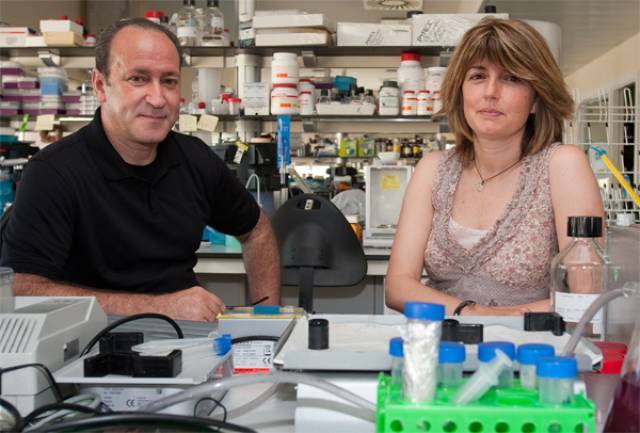Their research shows the critical role of cholesterol in the development of Alzheimer's disease, and provides a new mouse animal model which mimics the disease more accurately than the previous ones.
Unlike the transgenic models of disease previously available, the new mouse model generated in the laboratory has high levels of cholesterol in the brain, induced by SREBP-2, and reproduces a scenario where cholesterol, the accumulation of beta-amyloid and tau are linked. Researchers have observed that this increase accelerates and worsens different pathological manifestations of Alzheimer's disease, like beta-amyloid deposits, oxidative damage, neurodegeneration and neuroinflammation, and cognitive deficits. What makes the new model more similar to the processes suffered by human patients is the fact that it presents neurofilaments of hyperphosphorylated tau protein. This is one of the typical manifestations of the disease linked with neuronal death and, until now, only was observed in mice with mutations in this protein.
Along with the increased total cholesterol investigators also observed an enrichment of cholesterol in the mitochondria, an essential organelle for metabolism and cell survival / death, accompanied by a decrease of mitochondrial glutathione (GSH). A recovery therapy of the mitochondrial GSH levels, capable of avoiding the cholesterol-induced blocking of its transportation towards mitochondria, achieved a significant decrease both in the activity of kinases involved in the abnormal phosphorylation of tau and in the amounts of protein aggregates. They also observed a profound decrease in deposits of beta-amyloid and improved synaptic degeneration.
These results demonstrate the importance of preserving the mitochondrial antioxidant defense as a therapeutic strategy in Alzheimer's disease. To translate new knowledge into the clinic more studies will be needed to analyze the effects of cholesterol control in patients at early stages of the disease.
Reference: Barbero-Camps E, Fernández A, Martínez L, Fernández-Checa JC, Colell A. APP/PS1 mice overexpressing SREBP-2 exhibit combined Aß accumulation and tau pathology underlying Alzheimer's disease. Hum Mol Genet. 2013 May 21. [Epub ahead of print]


